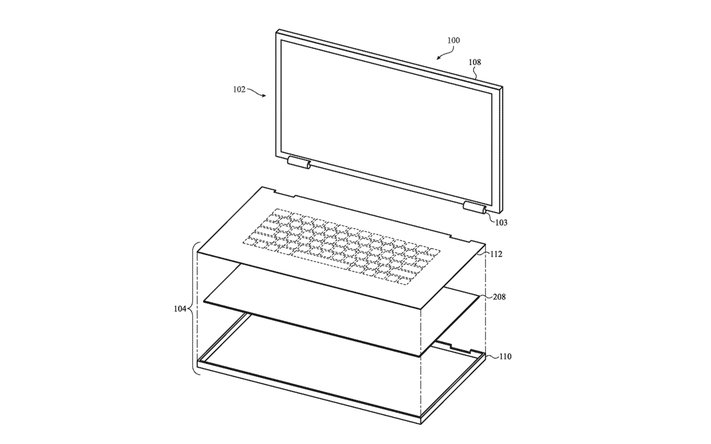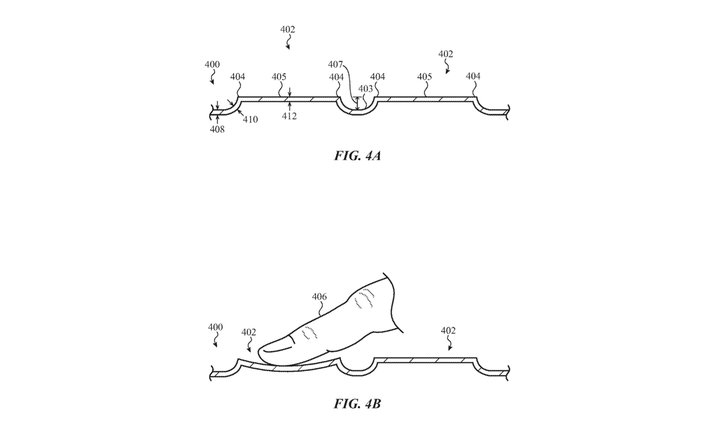Apple Patents Glass MacBook Keyboard That Bends Under Your Fingers
A new patent by Apple shows how it may solve its MacBook keyboard woes in future iterations of the laptops.
Published Jan 31 by the USPTO (and spotted by Digital Trends), the patent seeks to bridge the gap between the physical keyboards still used on laptops and desktop computers, and the touchscreen keyboards we are all used to seeing on smartphones.
The display of the laptop in the patent looks like any other, but the bottom section sandwiches a touch-sensitive display between a glass keyboard and the bottom of the device.
Credit: USPTO
In essence, it’s going to be like your phone’s keyboard, except with a physical element on top. Phone keyboards do the job just fine. However, the key thing this patent is looking for is feedback from the keys. On a smartphone, you know if you’ve hit a key because the phone will briefly flash the character you’ve tapped and also vibrate. There’s very little feedback from just hitting the screen.
Credit: USPTO
Apple’s solution is to have the glass keys bend or cause another element to buckle as you press keys, hitting the touch layer and giving you something between a touch screen and a normal physical key switch. Much of the patent is made up of possible designs for how the key would move when force is applied.
Sign up to receive The Snapshot, a free special dispatch from Laptop Mag, in your inbox.
MORE: Apple MacBook Air vs. Dell XPS 13: Which Should You Buy?
A final set of considerations are made regarding enhanced feedback for key presses. Other than the act of pushing down on the key, the patent leaves room for the possibility of haptic feedback (smartphone-like vibrations for each tap), or "resilient members,’" either spring or collapsible dome structures within the key that make them harder to press, giving the user a similar feeling to typing on a normal keyboard.
Credit: USPTO
The MacBook range’s current keyboard design, using butterfly switches to give the keys a slim profile, has not well received with users, as these switches are prone to jamming if any dust finds its way into the mechanism. There have also been complaints about the space bar entering two spaces instead of one.
Your skeptic hat must be firmly on while looking at these designs; there’s no guarantee this will become part of any Apple product soon, or even ever. The whole glass keyboard layer does seem at this point in time an ambitious thing to actually make, but existing large dual screen and touch screen devices, like Lenovo’s Yoga Book, are asking questions about keeping the traditional physical keyboard.
Even if Apple’s design doesn’t pan out, it’s still a strong suggestion that the days of the keyboard as we know it are numbered.
This post originally appeared on Tom's Guide.




